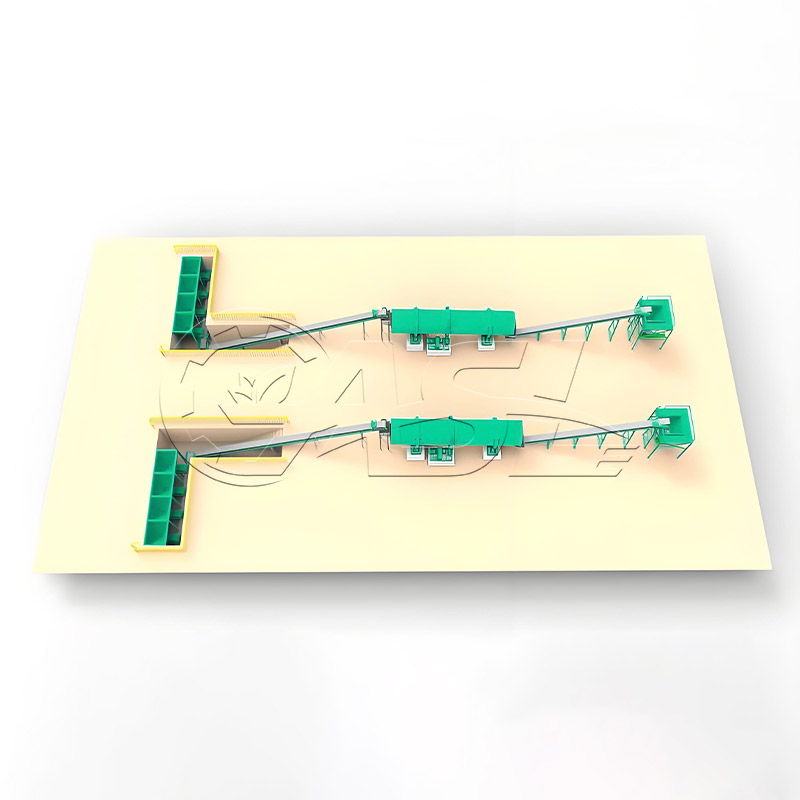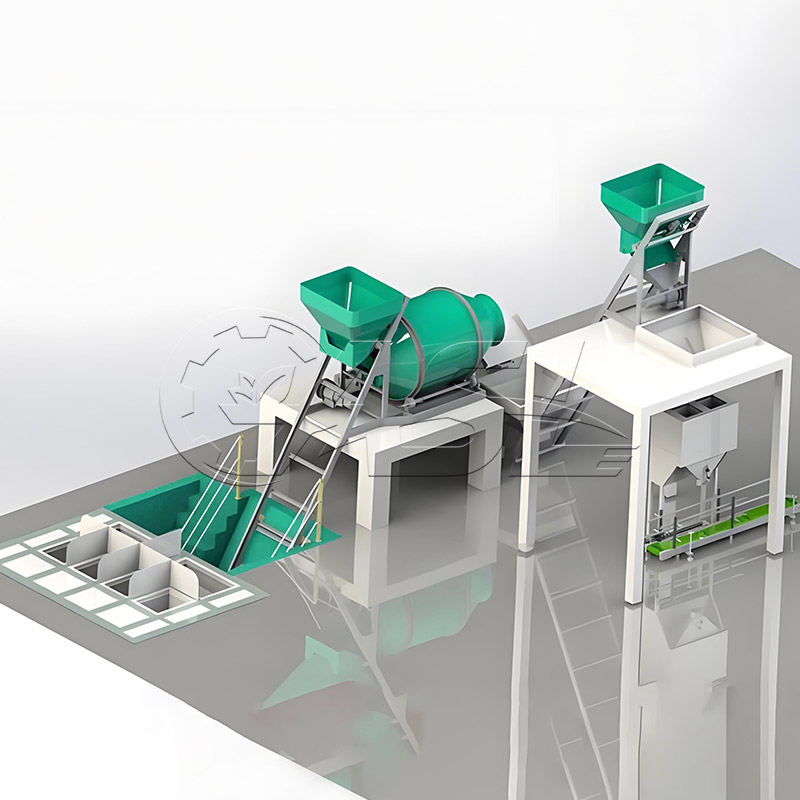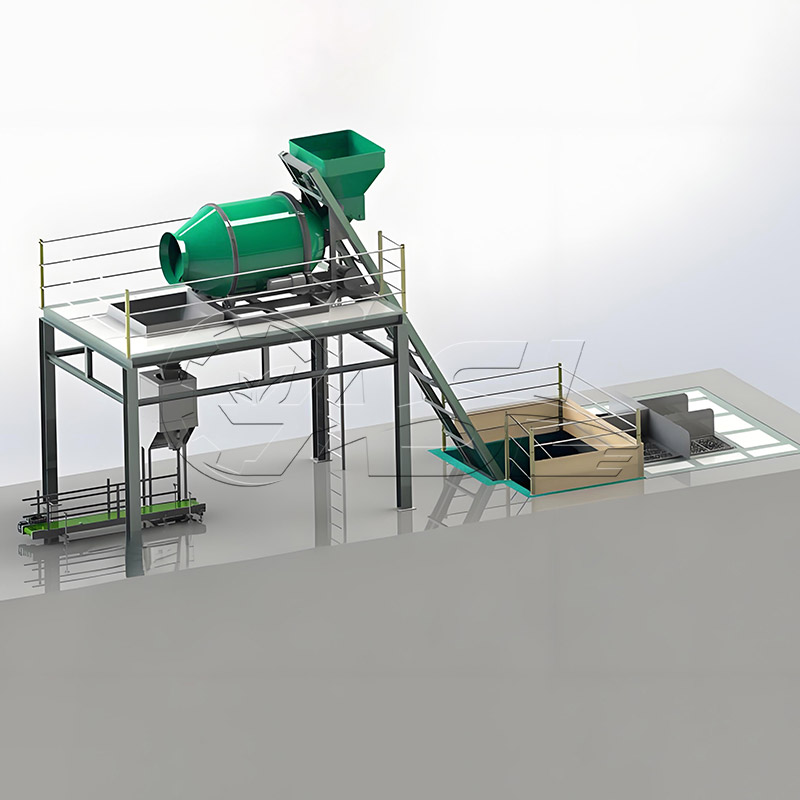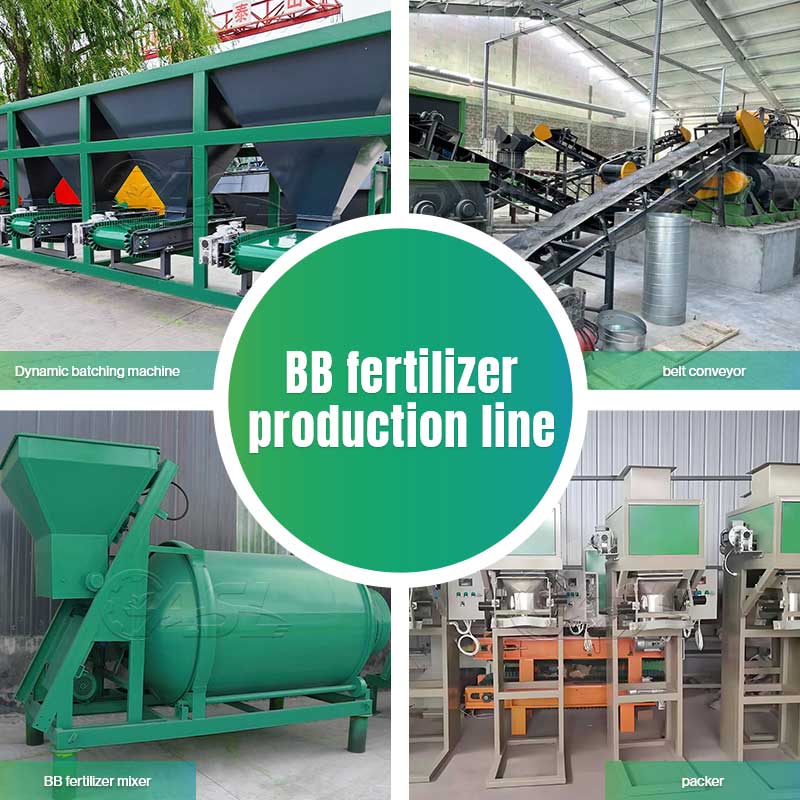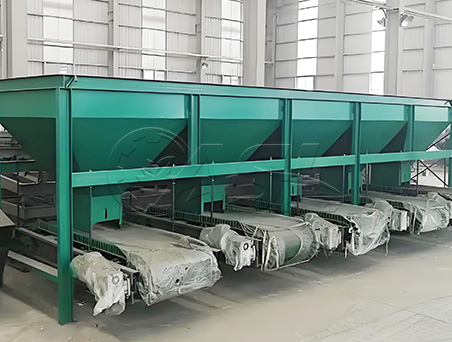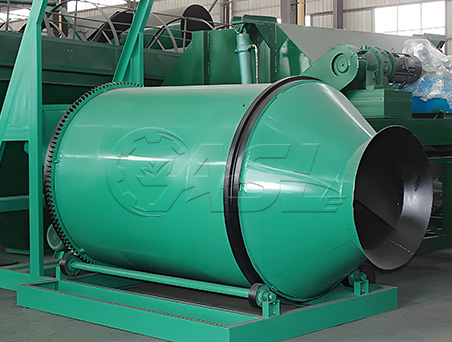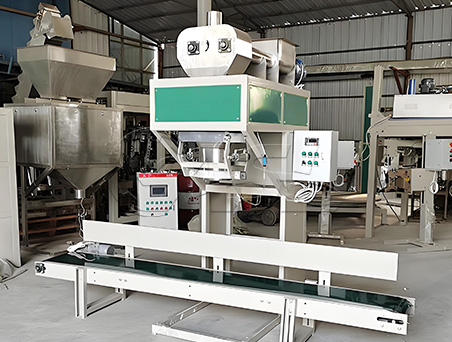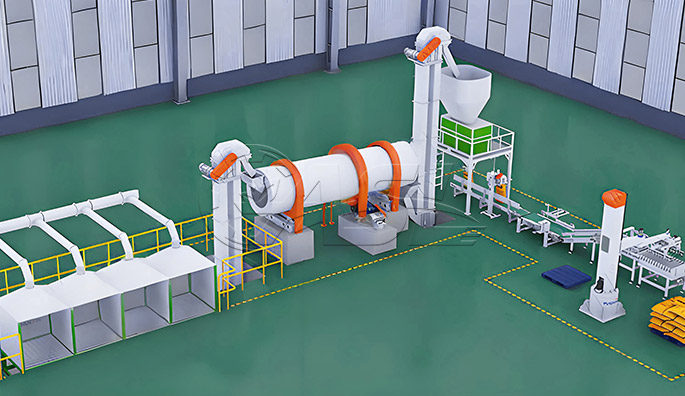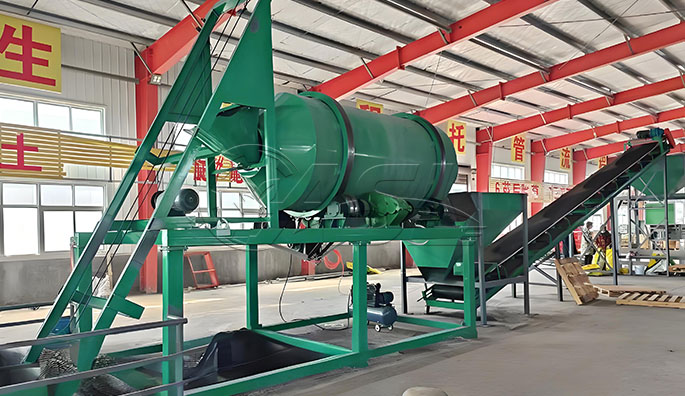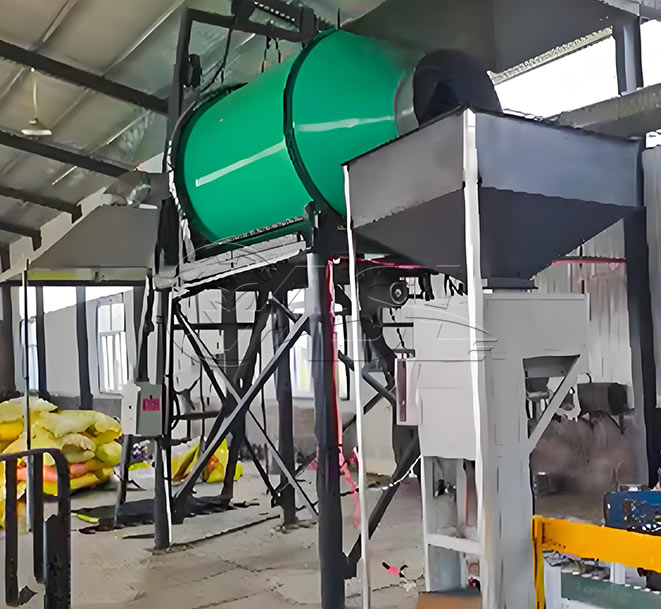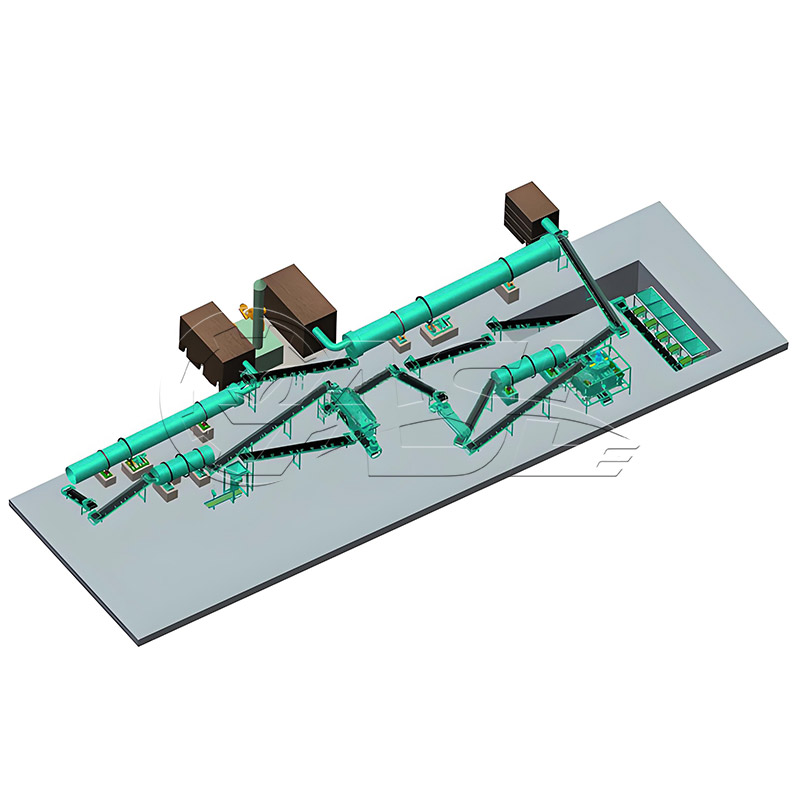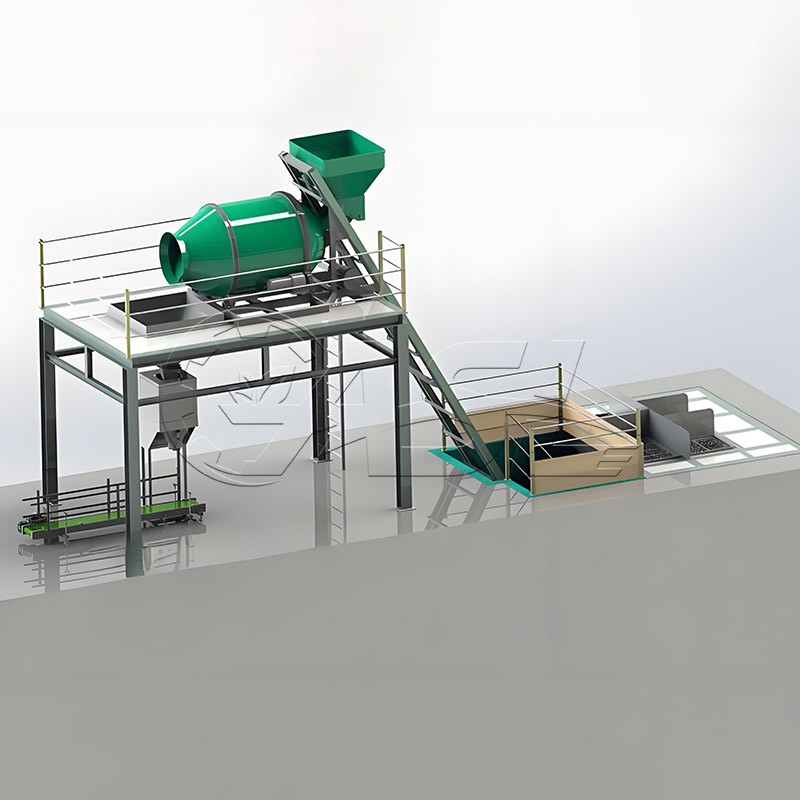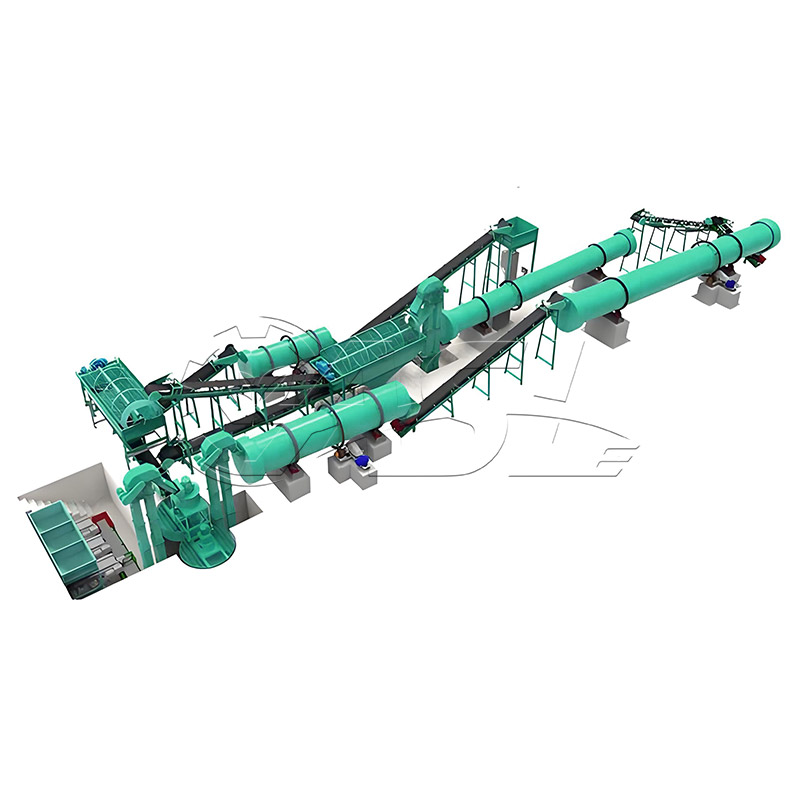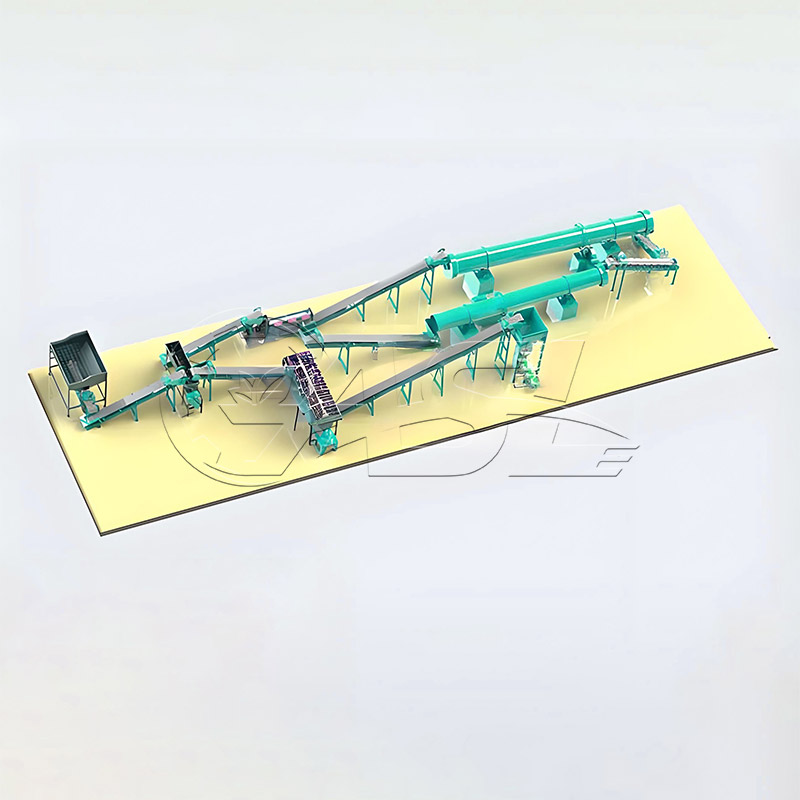When changing the formula of a BB fertilizer production line, does it need to be readjusted?
Yes, adjustments are required, but the process is simple. Fully automated production lines allow the new raw material ratios to be directly input through the PLC control system. The system automatically adjusts the feeder speed and metering parameters, eliminating the need for mechanical modifications. Semi-automated production lines require manual adjustment of the feed valve or belt scale parameters, which can be completed in 5-10 minutes by a skilled worker. This is the core feature of the BB fertilizer production line's "high flexibility."
Does the production process generate dust or pollution? Are environmental protection equipment required?
Raw material handling and mixing may generate a small amount of dust, but no wastewater or exhaust emissions are emitted. Simple dust removal equipment is recommended, installed at the silo outlet and above the mixer. This effectively controls dust and meets environmental requirements. For smaller production lines with limited budgets, enclosing the silo and improving ventilation can also reduce dust dispersion.
How many people are needed to operate the production line?
The level of automation determines the number of employees required: a fully automated production line requires only 2-3 people (responsible for raw material replenishment and packaging assistance); a semi-automated production line requires 4-5 people (with additional manual batching and equipment startup and shutdown procedures). No specialized skills are required; workers can begin work after 1-2 days of training.
Does varying raw material particle sizes affect mixing uniformity? How can product quality be ensured?
It does have some impact. If the raw material particle size varies significantly, stratification may occur. Solutions:
① Control raw material particle size through screening during pretreatment;
② Use high-efficiency mixing equipment and extend mixing time;
③ Conduct regular sampling and testing, verifying uniformity using the "four-part method."
What precautions should be taken during daily equipment maintenance? What are the wearing parts? Is replacement cost high?
Daily maintenance priorities:
① Regularly clean residual material from the mixer;
② Check the wear of the feeder's spiral blades and belt;
③ Lubricate transmission components. Consumable parts include spiral blades, belts, screening meshes, etc., with unit prices ranging from tens to hundreds of yuan, and a replacement cycle of 3-6 months. The maintenance cost is low, and the annual maintenance cost accounts for about 2%-5% of the total equipment price.
